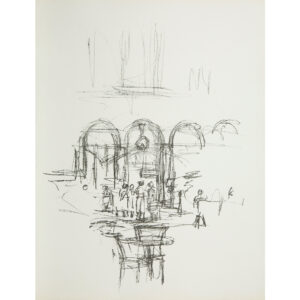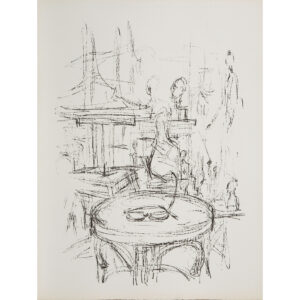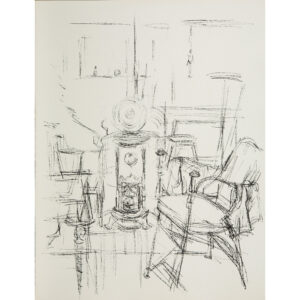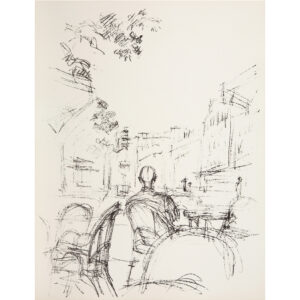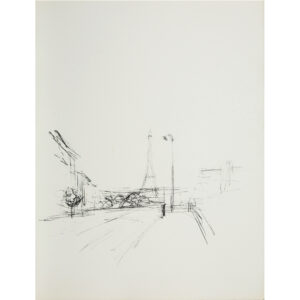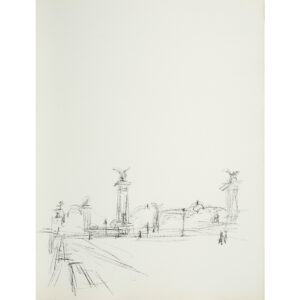Biography
Born in Borgonovo (Switzerland) in 1901, Alberto Giacometti began painting at an early age under the watchful eye of his father Giovanni, an Impressionist artist much appreciated by his peers. When he arrived in Paris in 1922, young Alberto attended the Académie de la Grande Chaumière and worked in the studio of sculptor Antoine Bourdelle. After a brief passage through Cubism, he took up etching in the studio of
Stanley William Hayter and joined the Surrealist movement in the early thirties. Alongside
Joan MiróJean Arp and
Salvador Dalíhe exhibited a number of "symbolically functional objects", including the famous
Hanging ball (1930).
Fascinated by the representation of the human figure, Giacometti soon left the onirism of André Breton's movement to develop a more personal style, characterized by filiform figures reduced to the essential, such as the sculpture
The Walking Man (1947). Through a variety of media (painting, sculpture, lithography, ballpoint pen...), the artist worked hard to translate what he saw and felt in each of his models, focusing in particular on facial expressions. By the end of his life, the easy handling of the lithographic pencil enabled him to capture the vibrant life around him in a modernizing Paris. He died on January 11, 1966. In 1969, the collection
Endless Parispublished posthumously, includes 150
lithographs and an unfinished text in the artist's hand. Galerie Arenthon offers preparatory proofs of this testamentary work, which bears witness to Giacometti's ever-renewed wonder for the capital in his final years.

